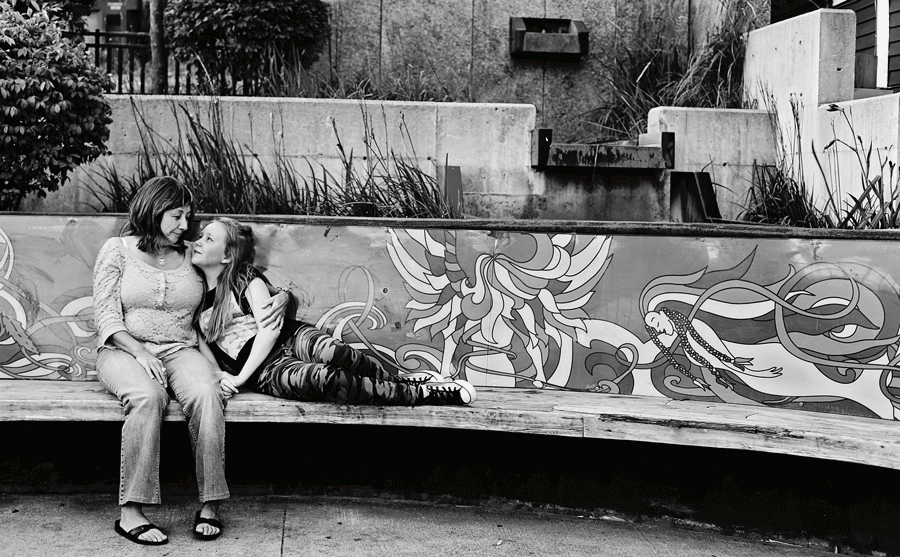Urban Inuit
About 30 per cent of Inuit in Canada now live outside Inuit Nunangat. The trend toward urbanization among Inuit is growing, yet Canadian cities are not fully prepared to facilitate this transition from northern hamlets and communities to large southern urban areas. Many cities in Southern Canada have organizations established with First Nations in mind; however, the needs and realities of Inuit are unique among Indigenous populations.
In Ontario alone, the Inuit population has grown from less than 100 in 1987 to an estimated 3,800 in 2017. The vast majority live in the National Capital area, making it the largest Inuit community in Southern Canada. According to Statistics Canada, the Ottawa-Gatineau area had an estimated 1,280 Inuit in 2016. But agencies that provide services to the community estimate the Inuit population in the capital is at least 3,700 and possibly as large as 6,000. Establishing improved data on Inuit outside of Inuit Nunangat is a priority; it is expected that the number of Inuit is much higher across Southern Canada than current data supports.
Even with the addition of special surveys, there remains an undercounting of urban Inuit population numbers.
Inuit service providers know that numbers are power and that Inuit need power to address the funding challenges for services and support for Inuit in the South. Generally, three per cent of Canadians are not counted during each census; for Inuit, the number of those not counted is much higher. Even with the addition of special surveys, there remains an undercounting of urban Inuit population numbers. Statistics Canada needs to work with Inuit in better and more comprehensive ways to determine accurate population statistics in the future.
Tungasuvvingat Inuit was established in Ottawa in 1987 to address the needs of the Ottawa Inuit community as the result of an Inuit needs-assessment study. The study clearly demonstrated the necessity of a service geared to the unique cultural requirements of Inuit, assisting them in making the huge adjustment from northern life to southern urban living. Urban migration of Inuit from the North has been accelerating ever since. Tungasuvvingat Inuit has more than 30 years of experience in crafting the design, development and delivery of a wide range of effective, client-centred services toward urban Inuit.

Urban Inuit organizations also serve an important role in helping newly arrived Inuit navigate the city and the services available to them and in advocating for and delivering those services where they do not exist.
The infrastructure and capacity built to facilitate the transition of First Nations moving to the urban environment needs to be replicated and supported to meet the specific needs of Inuit. Governments frequently make programs available to “Indigenous people.” This “pan-Indigenous” approach is felt to be simply a short form for First Nations, causing Inuit to continue to be treated as First Nations in program delivery. Inuit, a unique people with their own culture, language and history, are often forgotten. There must be Inuit-specific funding and program delivery, as Inuit often feel uncomfortable using pan-Indigenous facilities. Inuit are frequently not able to obtain funds due to this pan-Indigenous approach, as available funds are often distributed on a per capita basis. Since Inuit are the smallest population of Indigenous Peoples in urban settings, they are frequently given a very small portion of available funding allocated to Indigenous Peoples. This pan-Indigenous approach in services and programs delivery is simply not working.
Inuit from seven Canadian cities met in Ottawa in 2005 for a conference organized by Tungasuvvingat Inuit entitled “National Urban Inuit — One Voice.” It was the first countrywide gathering of urban Inuit advocates. In 2016, another key conference, the National Urban Inuit Community Dialogue, brought together Urban Inuit from cities across Southern Canada. Since then, a core group of Inuit from Montreal, Ottawa, Toronto, Winnipeg, Edmonton and St. John’s, N.L., have been working together to form a national Urban Inuit Network. They are ready to work together for the betterment of all Inuit. There is a need for resources for local Inuit to continue to gather, support one another and celebrate their successes with their local service provision network.

It has been exciting to see the ways Inuit have been incorporating and adapting their traditional practices and culture into the urban landscape. From preparing traditional Inuit foods in new and creative ways to modifying Inuit fashion for an urban environment, Inuit continue to generate innovative ways to preserve and promote our culture at home and in the South. Many of these ideas are shaped and shared during gatherings of Inuit in urban centres provided by Inuit core groups. These gatherings are invaluable to the personal well-being of urban Inuit and reinforce connections to culture, identity and each other.
It is heartening to see Inuit being embraced across southern Canadian cities. Since National Indigenous Peoples Day in 2017, Toronto City Hall has proudly raised the Inuit Tapiriit Kanatami flag proclaiming the Inuit are a recognized part of Canada’s largest metropolis.


Order now
from Amazon.ca or Chapters.Indigo.ca or contact your favourite bookseller or educational wholesaler




